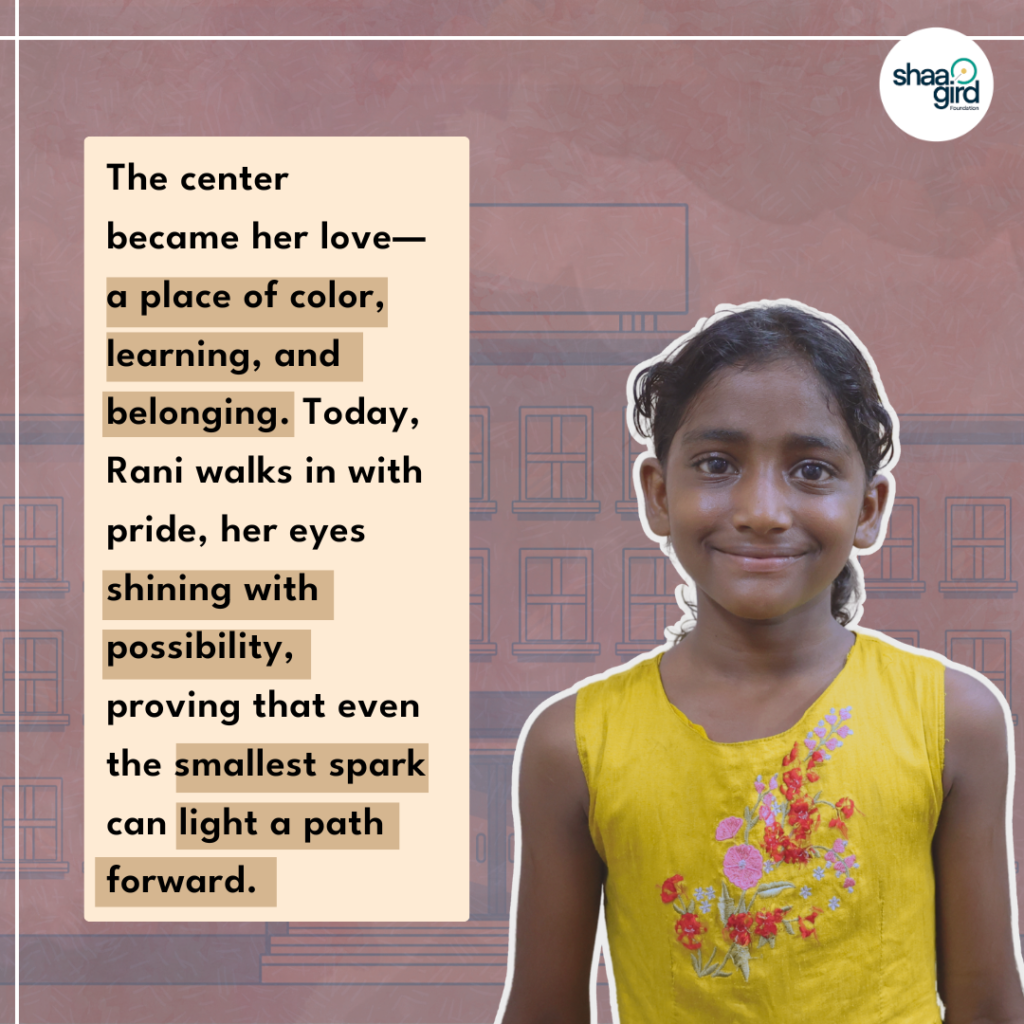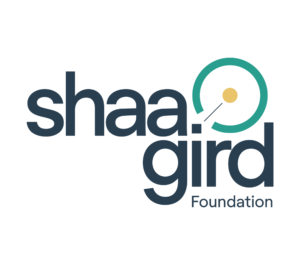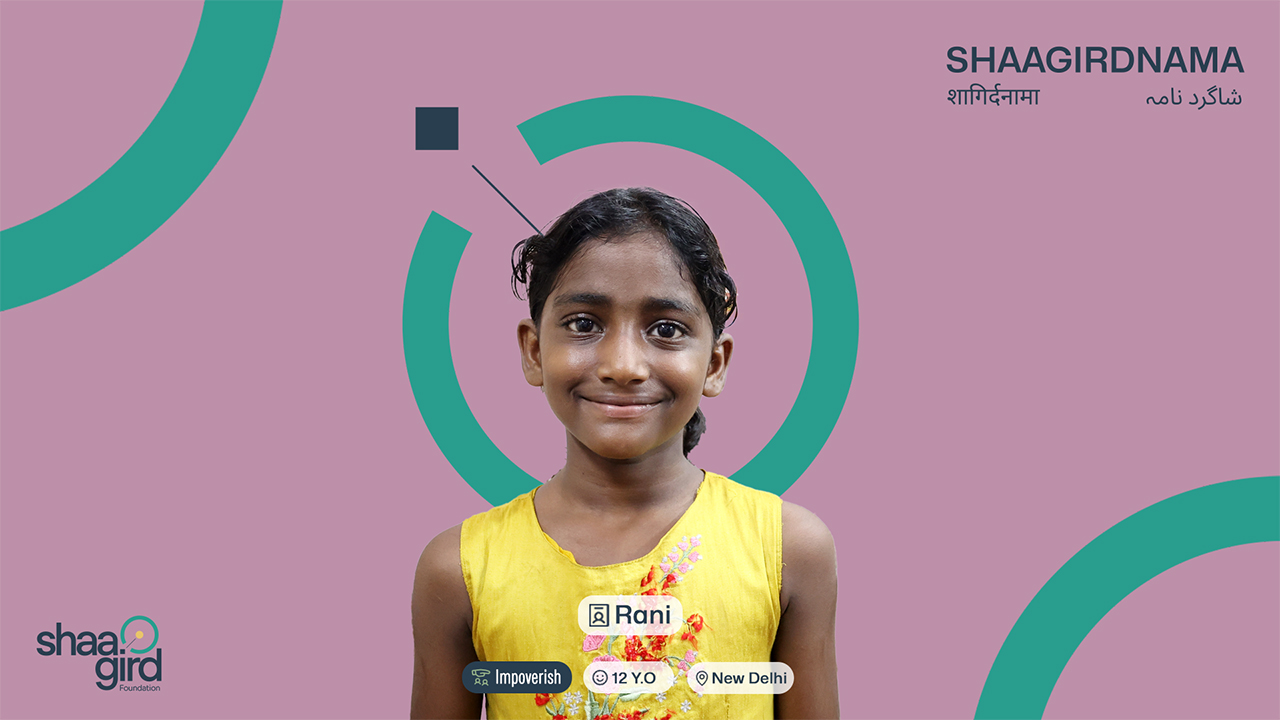In the narrow, bustling lanes of Batla House, Delhi, hidden behind rows of tea stalls and vegetable carts, lived a nine-year-old girl named Rani Khatoon. Her home was a small jhuggi made of tin sheets and tarpaulin, barely enough to keep the heat out in summers or the cold out during winters. But inside that tiny space lived a world full of dreams.
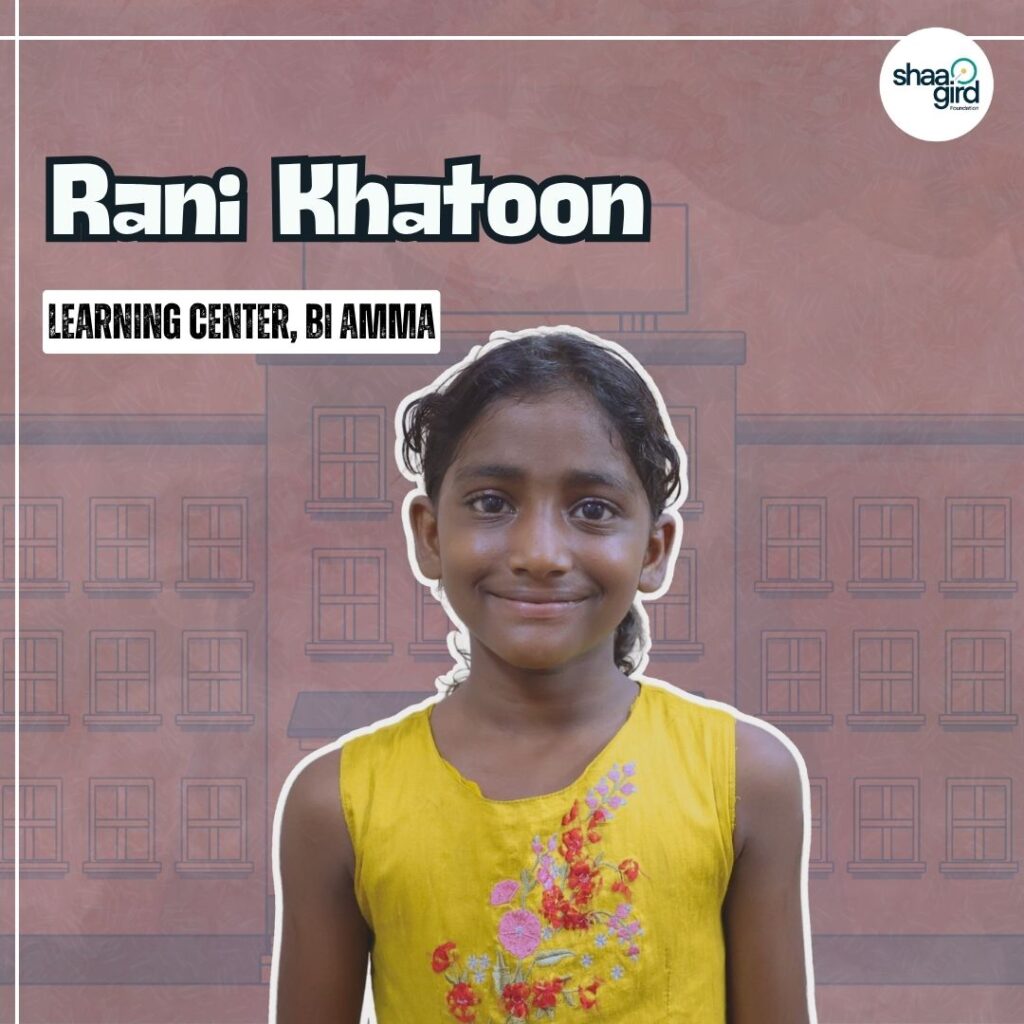
Rani’s father is an e-rickshaw puller. Every morning, he would step out before sunrise, weaving through traffic, ferrying passengers across the city just to earn enough for two meals a day. Rani, unlike other children her age, did not wear a school uniform or carry a school bag. Her classroom was the street, and her chalkboard was the wall of her jhopdi, where she sometimes drew with coal.
But Rani had something special: a mind full of questions and a heart full of stories she didn’t yet know how to write. One afternoon, while she was helping her mother wash utensils outside, a group of smiling people walked into the lane. They were from the Shaagird Foundation. The team was visiting homes in the area, spreading the word about their newly opened learning center named Bi Amma, just a few lanes away.
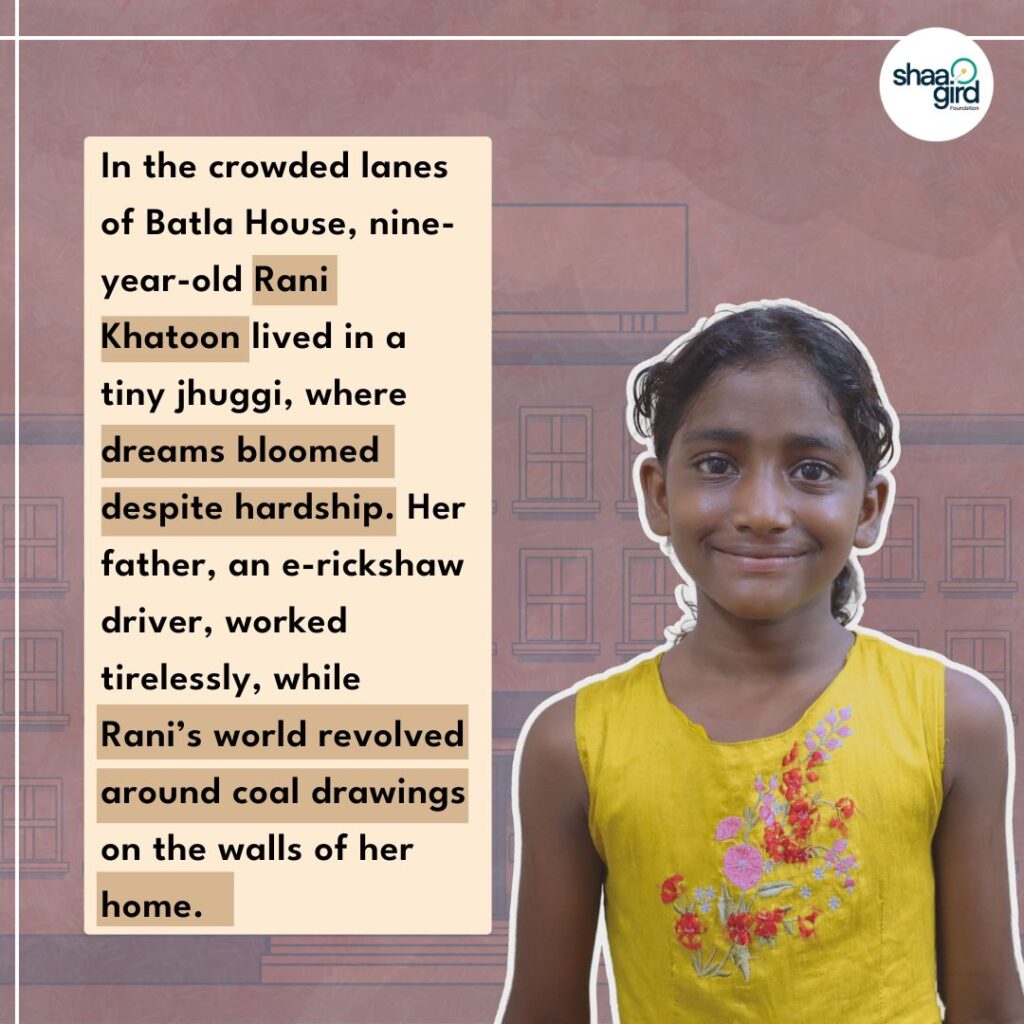
A member from the team asked her, “Would you like to go to a place where you can read books, draw, sing, and learn new things every day?” Rani looked up, eyes wide with curiosity. No one had ever asked her that before. The very next morning, she walked hand-in-hand with her mother to the Learning Center. The moment she stepped inside, her world changed.
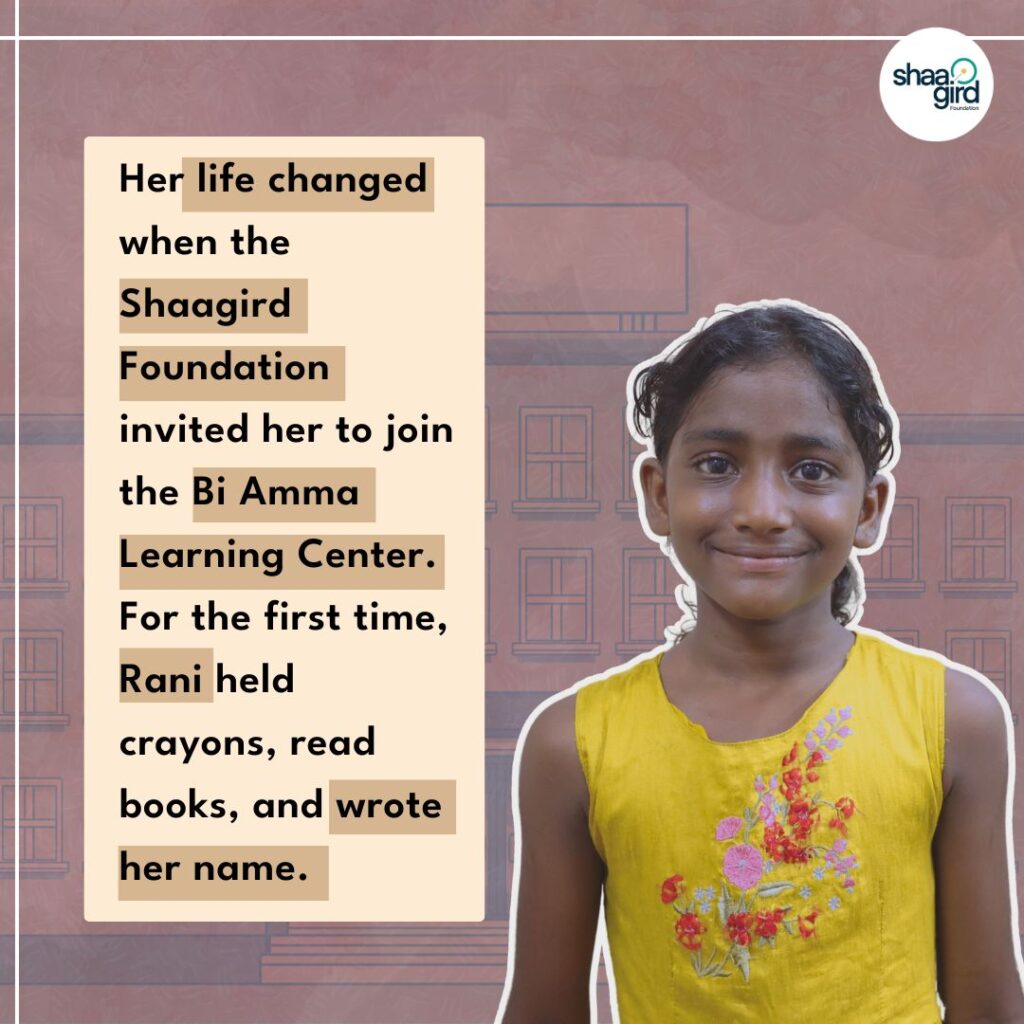
Bright charts on the walls, books neatly stacked on shelves, and children laughing and learning—it was unlike anything Rani had seen. She sat in her new classroom for the first time, crayons in hand, eyes glowing. Her teacher welcomed her warmly. That day, Rani wrote her name on paper for the first time.
The smile on her face said more than words ever could. From that day on, Rani never missed a class. The Learning Center became her happy place, a space where her dreams found shape.
